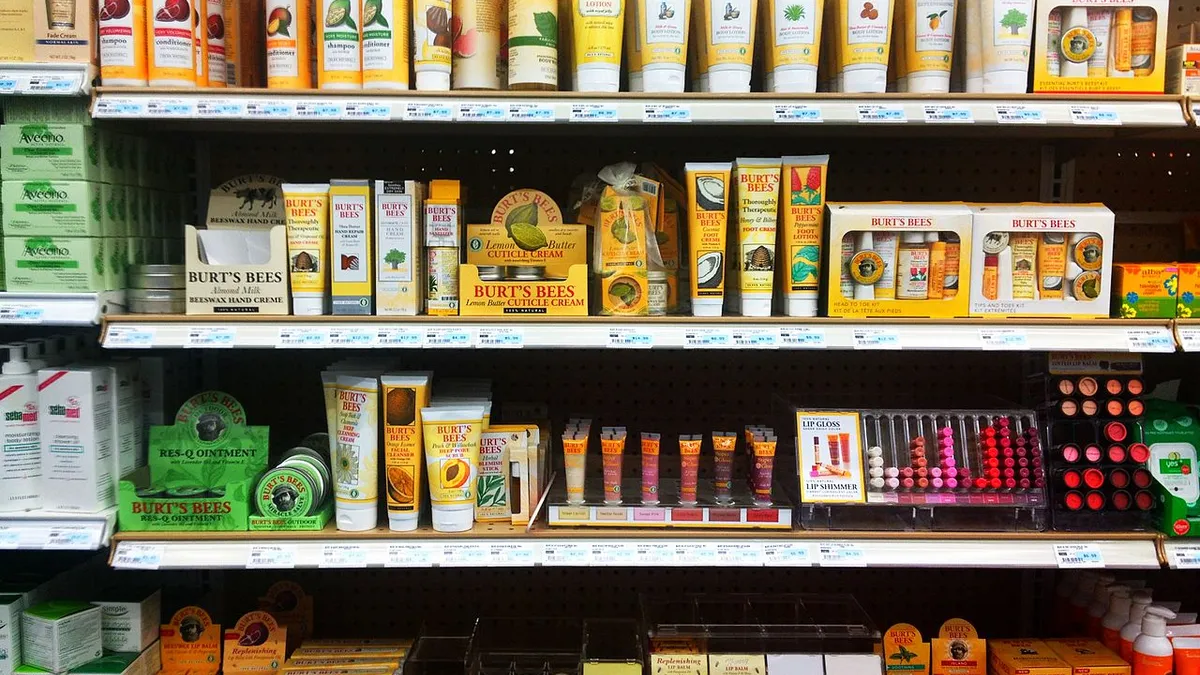Dive Brief:
- To drive growth in health and beauty care (HBC) and general merchandise (GM) departments, grocers must utilize frequent promotions, offer competitive pricing or price matching and use creative groupings, displays and cross-merchandising. These best practices are revealed in a new study from Acosta and the Food Marketing Institute about how to increase HBC and GM sales in grocery stores.
- Shoppers spend more than $80 billion per year on HBC and GM products at brick-and-mortar grocery stores, but most people still make a majority of their HBC and GM purchases outside of grocery stores, the report notes. While 50% of people shop grocery store perimeters each week, just 20% shop HBC and GM each week.
- E-commerce is also a major threat to brick-and-mortar HBC and GM spending. The study suggests that grocers need to deliver new experiences for customers and to increase revenue from HBC and GM departments, which include high-value items and present a strong growth opportunity, especially among millennials.
Dive Insight:
There are a number of reasons why grocers should be motivated to increase HBC and GM spending among shoppers, from generating higher profits to solidifying customer loyalty from shoppers who know they can find everything they need in one place.
Grocers likely fall behind in this space, in part because of price and selection. While a grocery store may offer cough medicine or mascara, shoppers know they can find a wider range of choices at lower prices at their nearest Target, Walmart or specialty retailer. Or, they can open up their Amazon app to compare and make an alternate purchase with just a couple of taps.
The study recommends grocers look more closely at pricing, and price matching. If done correctly, this could be a game changer for grocers and could help combat the threat of e-commerce. Additionally, when it comes to items like cold relief or beauty products or band-aids, some grocers offer their own store brands, which are often comparable to pricing outside the store. There may be value in investing more in private label development and marketing for GM and HBC items.
Store layout is also significant. The study found that retailers who are winning in sales increases in GM and HBC departments are those that are rethinking the way those products are displayed. GM is usually spread out around the store, while HBC is grouped. What can grocers do to shake this up? When it comes to skincare or cosmetics, for example, grocers could create a space for shoppers to try and test products before purchase, or they could invite a sales rep in to offer samples to customers or make it feel more like a full-service beauty counter. This will also help attract customers to shop for these items at the store rather than online because of the experience factor.
If the opportunity for GM and HBC departments is strong at grocery stores, then grocers must prioritize these departments in the same way they prioritize their key food departments. Don't just stock them out of necessity. Grocers will also need to pay special attention to product trends in these categories. Ultimately, most customers want good prices and convenience. If they can get all of their food, HBC and GM needs met under one roof and they are happy with their options, both the grocer and the customer will win.













